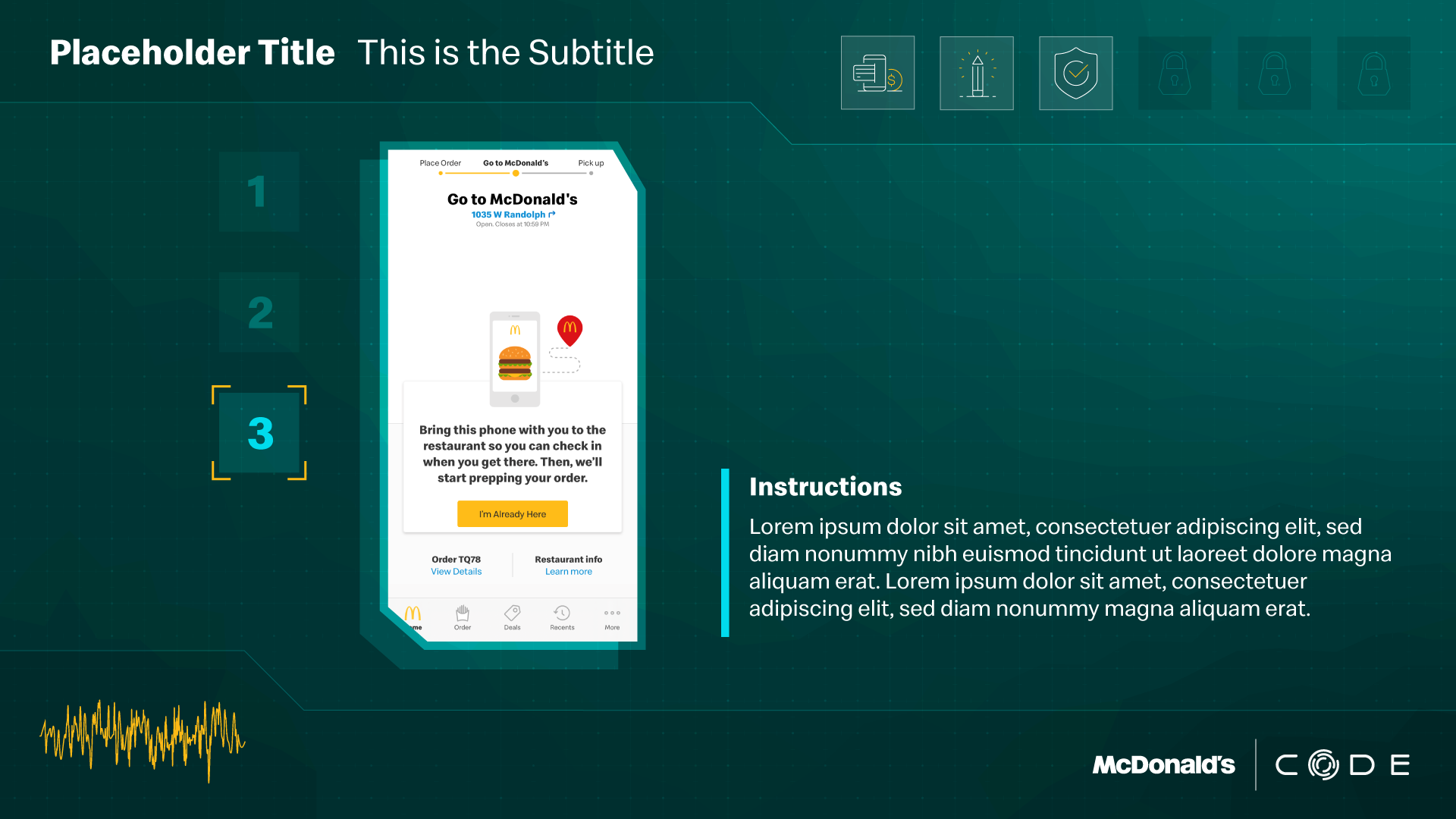Global Training Program
-
Develop a global training program for McDonald’s CODE initiative that educates teams on digital innovation, restaurant technology, and system modernization. The project required a consistent and engaging identity that could translate complex technical concepts into clear, visually-driven learning experiences for employees worldwide.
-
As Creative Director, I led the development of the CODE visual identity and training assets from concept through delivery. This included:
Designing multiple logo and branding options that evolved McDonald’s recognizable look into a sleek, tech-forward aesthetic.
Directing a multidisciplinary team of designers, developers, and writers to create animations, interactive modules, and eLearning materials.
Producing motion graphics, video assets, and badge animations built around a cohesive design system using HUD (heads-up display) layouts, UI elements, and glowing digital transitions.
Pitching the creative direction and visual concept directly to executive leadership, including the CTO, to ensure alignment with global brand strategy.
-
The CODE training suite delivered a clear, unified visual framework that strengthened how McDonald’s educates its teams on critical restaurant technology. Designed for a system of over 13,000 locations and hundreds of thousands of connected devices, the new visuals and motion system helped simplify complex concepts and improve understanding across global operations. The work set a new creative standard for internal training, combining clarity, consistency, and brand precision at scale.
-
Illustator
Photoshop
After Effects
Audition
McDonald’s Digital Growth
The MyMcDonald’s Rewards program reached over 150 million active users in a 90-day period as of late 2023, with a goal of 250 million by 2027.
App, kiosk, and delivery orders now account for a significant share of total sales in major markets, helping streamline operations and personalize customer experiences.
Loyalty members contributed over $20 billion in systemwide sales, demonstrating strong engagement and repeat purchase behavior.
The “Ready on Arrival” geofencing pilot achieved an average 62-second reduction in wait times for mobile pickup orders (curbside or in-restaurant).
Markets adopting self-service kiosks have seen ~20% higher average order size and ~30% higher average order value, as customers explore more menu options while ordering.
Enhanced app analytics and digital menu boards enable tailored promotions and recommendations, boosting upsell opportunities and customer satisfaction






